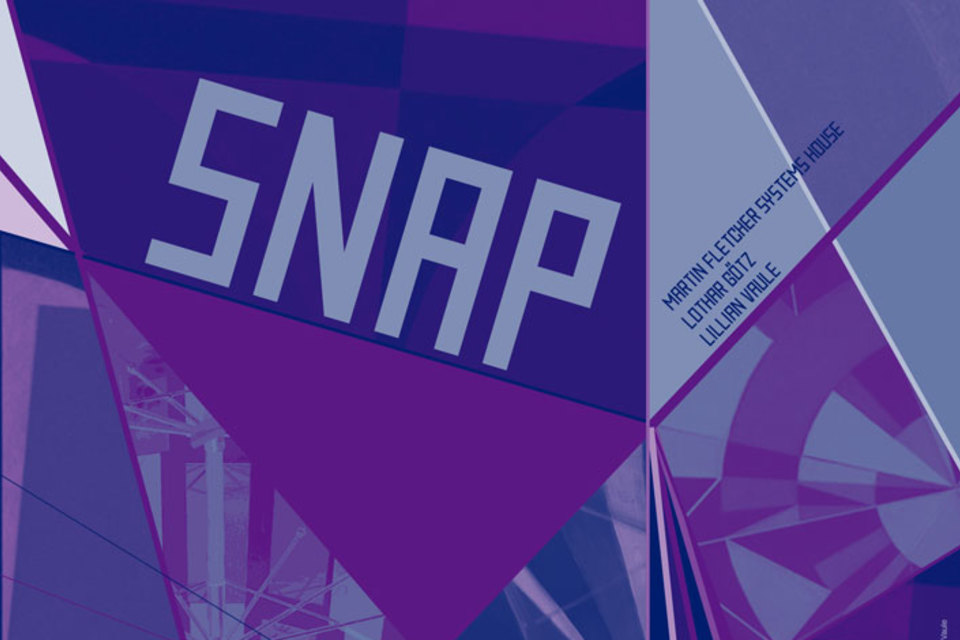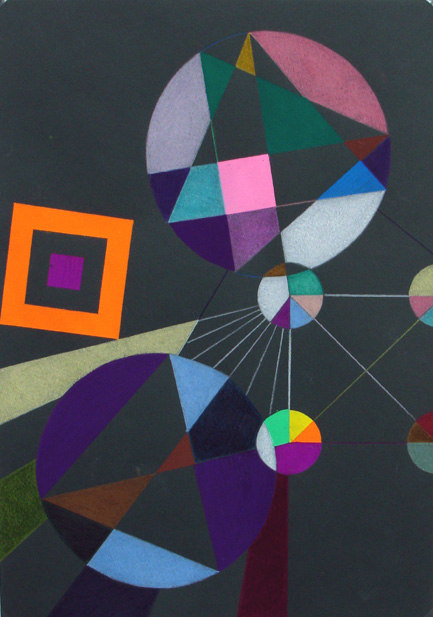SNAP
Lothar Götz | Lillian Vaule

Curated by Richard Priestley
The artists in SNAP could be viewed when displayed collectively, as addressing the human quest to affect our mental state through our surroundings. It is the human obsession with our dwellings that fuels the dialogue in SNAP. Scientific theory suggests that we are all born with an inherent recognition of certain colours and shapes and exhibit a collective response to them.
An ambiguous word, SNAP might be the sound made when something is both split and joined. The title of the show also conjures concepts of repetition after the card game of that name, played by children. Beyond this, the Zener Cards are a set of cards of five sets of identical shapes, which are used to test for extra sensory ability - the 'testee' is required to predict the card about to be drawn by the 'tester'; more than 20% success indicates beyond chance expectation. SNAP sits with childhood because of it's modular, repetitive, monosyllabic simplicity which we associate with the developmental time before self-consciousness.
But SNAP opens the dialogue further still; Martin Fletcher's structures whisper about how we might power our architecture, communicate, insulate, defend or adorn; maybe at present, or in utopian or dystopian futures. They allude to being functional, highly evolved devices.
Lothar Götz's drawings are his reconstructions of imaginary architectural blueprints of buildings he has had a physical or emotional connection to. Here memories express their emotions through colour as well as shape and geometry and the work imbues the order of the blueprint with narrative and fantasy.
Lillian Vaule's paintings lead us into the subconscious interpretation of colour and shape. They hint at the occult nature of shape, colour and symbol, and whose messages we may be born with the ability to decode. They hold within a reverence for the ceremony of domestic rituals.
Lothar Götz makes artworks for the walls of interior spaces as well as for the outside of buildings. He creates expanses of vivid colour in strips or other geometric shapes. His minimalist designs are made especially for the spaces they occupy. He has had solo shows at The Economist, Chisenhale Gallery and Gasworks and numerous international projects in Hamburg and Santiago Compostela. More recently he completed a site specific commission for 'Platform for Art'.
Lillian Vaule exhibited in Flaca, London last year and was invited to take part in the Glasgow International 2005. Martin Fletcher Systems House has recently graduated from Goldsmiths College in 2006. He will be taking part in a group exhibition at Victoria Miro London for the first time in mid February 2007.
